Do you have a question about the Viessmann Vitocell 200 Cylinder and is the answer not in the manual?
Routine checks and essential maintenance for the cylinder, to be carried out by a qualified installer.
Guidance on safely handling and storing the Vitocell 200 Cylinder before installation.
Overview of the Vitocell 200 Cylinder range, its materials, and compliance with Building Regulations.
Details of the unvented hot water storage cylinder for gas or oil boilers.
Details of the unvented hot water storage cylinder for solar gains and boilers.
Further details on the solar cylinder, including its second solar coil.
Table detailing technical specifications for Vitocell 200-V and 200-B Solar models.
Diagram and table showing dimensions and connection points for various models.
Identification of basic appliance parts and supplied component kit for the V model.
Lists separate components included with the Vitocell 200-V Cylinder.
Identification of basic appliance parts and supplied component kit for the B Solar model.
Lists separate components included with the Vitocell 200-B Solar Cylinder.
Guidelines for cupboard footprint, base support, and discharge pipework for installation.
Requirements for mains water pressure and flow rates for system operation.
Guidance on selecting the appropriate cylinder model based on hot water demand.
Important limitations and restrictions for installing unvented cylinders.
Recommendations for shower mixing valves and shower heads for optimal performance.
Guidelines for pipe layout, plastic pipework, and secondary circulation systems.
Diagram illustrating the correct setup for discharge pipework from safety valves.
Requirements for installing discharge pipework from relief valves according to building regulations.
Importance of using genuine replacement parts and not bypassing safety devices.
A schematic showing the arrangement of the unvented hot water cylinder system.
Details of the components within the combination inlet group.
Information on the temperature/pressure relief valve and immersion heaters.
Guidance on ensuring proper insertion of solar probes into thermostat pockets.
Information on the line strainer and tundish and their maintenance.
How the cylinder copes with pressure increases and primary water temperatures.
Details on open vented, sealed, and 4-pipe heating systems for the cylinder.
Diagram showing a typical solar system arrangement with the cylinder.
Requirements for component marking, safety devices, and pipework in solar systems.
Information on solar controller compliance and sensor integration for optimal performance.
Key requirements and diagrams for correctly piping blending valves to unvented appliances.
Lists essential points for fitting blending valves, including WRC approval and safety device non-bypass.
Wiring diagram for solar systems, showing connections to the controller and cylinder.
Detailed wiring diagram for a typical S-plan system with specific components.
Steps for connecting, filling, checking for leaks, and testing safety valves.
Step-by-step instructions for safely draining the appliance.
Guidance on normal operation, routine maintenance, and troubleshooting common issues.
Important safety warning regarding water discharge from the tundish.
Recommended periodic maintenance tasks for safety and optimal performance.
Reminder about following commissioning instructions when draining down.
Troubleshooting common issues like scale formation and lack of water.
Actions to take if water is discharging from expansion or relief valves.
Flowchart for diagnosing and resolving the "No Hot Water" issue.
Flowchart for diagnosing and resolving poor water flow at taps.
Flowchart for diagnosing and resolving water discharge into the tundish.
A list of available spare parts with their descriptions and part numbers.
Information on reducing water-related costs through good plumbing practices.
Details on shower regulators and fixing options.
Explains different fixing options for tap and mixer regulators.
General guidelines for safe manual handling of the appliance.
Details safe lifting procedures, hazards, and risk management for handling.
Routine checks and essential maintenance for the cylinder, to be carried out by a qualified installer.
Guidance on safely handling and storing the Vitocell 200 Cylinder before installation.
Overview of the Vitocell 200 Cylinder range, its materials, and compliance with Building Regulations.
Details of the unvented hot water storage cylinder for gas or oil boilers.
Details of the unvented hot water storage cylinder for solar gains and boilers.
Further details on the solar cylinder, including its second solar coil.
Table detailing technical specifications for Vitocell 200-V and 200-B Solar models.
Diagram and table showing dimensions and connection points for various models.
Identification of basic appliance parts and supplied component kit for the V model.
Lists separate components included with the Vitocell 200-V Cylinder.
Identification of basic appliance parts and supplied component kit for the B Solar model.
Lists separate components included with the Vitocell 200-B Solar Cylinder.
Guidelines for cupboard footprint, base support, and discharge pipework for installation.
Requirements for mains water pressure and flow rates for system operation.
Guidance on selecting the appropriate cylinder model based on hot water demand.
Important limitations and restrictions for installing unvented cylinders.
Recommendations for shower mixing valves and shower heads for optimal performance.
Guidelines for pipe layout, plastic pipework, and secondary circulation systems.
Diagram illustrating the correct setup for discharge pipework from safety valves.
Requirements for installing discharge pipework from relief valves according to building regulations.
Importance of using genuine replacement parts and not bypassing safety devices.
A schematic showing the arrangement of the unvented hot water cylinder system.
Details of the components within the combination inlet group.
Information on the temperature/pressure relief valve and immersion heaters.
Guidance on ensuring proper insertion of solar probes into thermostat pockets.
Information on the line strainer and tundish and their maintenance.
How the cylinder copes with pressure increases and primary water temperatures.
Details on open vented, sealed, and 4-pipe heating systems for the cylinder.
Diagram showing a typical solar system arrangement with the cylinder.
Requirements for component marking, safety devices, and pipework in solar systems.
Information on solar controller compliance and sensor integration for optimal performance.
Key requirements and diagrams for correctly piping blending valves to unvented appliances.
Lists essential points for fitting blending valves, including WRC approval and safety device non-bypass.
Wiring diagram for solar systems, showing connections to the controller and cylinder.
Detailed wiring diagram for a typical S-plan system with specific components.
Steps for connecting, filling, checking for leaks, and testing safety valves.
Step-by-step instructions for safely draining the appliance.
Guidance on normal operation, routine maintenance, and troubleshooting common issues.
Important safety warning regarding water discharge from the tundish.
Recommended periodic maintenance tasks for safety and optimal performance.
Reminder about following commissioning instructions when draining down.
Troubleshooting common issues like scale formation and lack of water.
Actions to take if water is discharging from expansion or relief valves.
Flowchart for diagnosing and resolving the "No Hot Water" issue.
Flowchart for diagnosing and resolving poor water flow at taps.
Flowchart for diagnosing and resolving water discharge into the tundish.
A list of available spare parts with their descriptions and part numbers.
Information on reducing water-related costs through good plumbing practices.
Details on shower regulators and fixing options.
Explains different fixing options for tap and mixer regulators.
General guidelines for safe manual handling of the appliance.
Details safe lifting procedures, hazards, and risk management for handling.
| Maximum Operating Pressure (Domestic Hot Water) | 10 bar |
|---|---|
| Maximum Operating Temperature (Domestic Hot Water) | 95 °C |
| Capacity | 200 liters |
| Insulation | Polyurethane foam |
| Heat exchanger material | Stainless steel |
| Insulation thickness | 80 mm |

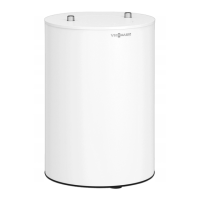
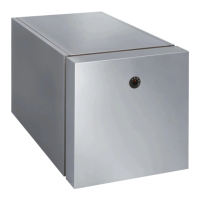
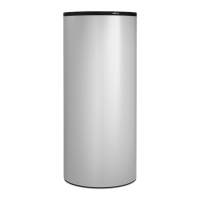


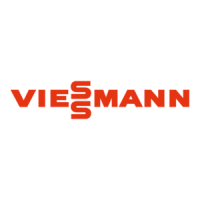

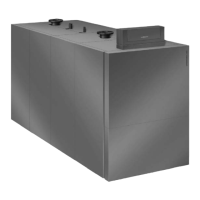
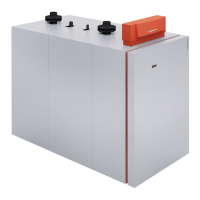
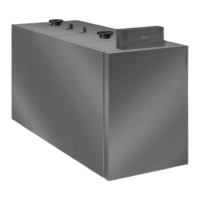

